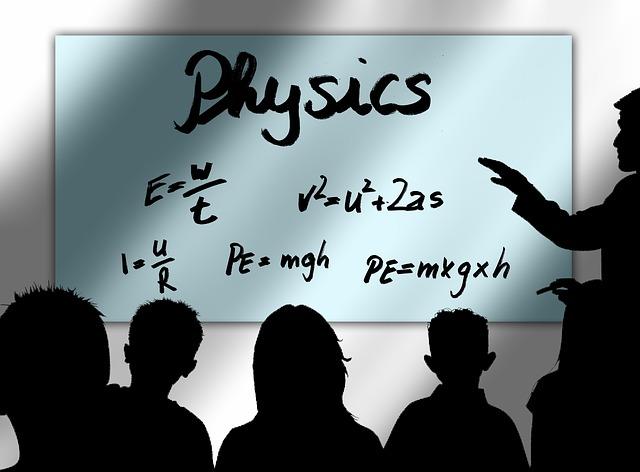Everything about everything hinges on the waves. The absence of waves means no heat, no light and no sound – in fact, a complete absence of movement. In essence, waves are not just abstract scientific concepts confined to the surface of the ocean, they are an omnipresent phenomenon.
In trying to decipher the meaning of waves, we can say that waves are disruptions in a medium. Or that they are fluctuations that facilitate the transfer of energy.
Devoid of waves, energy remains inert and is incapable of accomplishing anything. The reciprocal relationship between waves and energy is fundamental because waves rely on energy to induce disturbance or displacement.
In essence, understanding what waves are is important because it affects every aspect of our universe. When it comes to what are waves, they can be explained as various physics phenomena that range from light, classified as an electromagnetic wave, to sound, which represents mechanical waves. Whether it's radio waves, x-rays, heat, ocean waves, the undulation of a rope, or the resonance of a guitar string, they all stem from the same underlying principle.
Not only are waves indispensable to daily life, but they are one of the most fascinating aspects of science. Without waves, our existence would be non-existent.
In this short guide that covers everything from physical properties to myriad technologies, you will find out more about what waves are, as well as information about both transverse wave and longitudinal waves.

The Amazing Properties of Waves
As already mentioned, waves are disruptions in a medium that happen with a transfer of energy. Of course, this abstract concept can be complex to try and explain, but here is an analogy that could help explain the amazing properties of sound waves.
The Analogy of the Train Track
When someone knocks on a train track, it is the sound energy that is transmitted, not the actual mass of the track. In other words, this analogy means that in the case of sound waves, it's the energy of the disturbance that reaches your ear, not the mass of the medium (train track).
In addition, waves displace mass as they move through a medium, but it is the way in which mass is displaced that determines their classification. This is the difference between the transverse wave and longitudinal waves.
The transverse wave is displaced at a perpendicular angle to the direction of the energy’s movement. An example of this would be light waves. Longitudinal waves on the other hand are mass displacement that happens in a parallel direction to the energy’s movement. An example of this? Sound!
From ripples on water and electromagnetic waves, to sound waves that occur within in different mediums, understanding these concepts is fundamental to grasping the behaviour of waves in various contexts.

Wave Amplitude and Wavelength
Irrespective of how the medium is displaced, both categories of waves exhibit varying wave amplitude and wavelengths. These two parameters serve as fundamental measures for describing waves in a broad sense.
Wave amplitude indicates the extent of displacement, evident in a transverse wave diagram through polarisation—this is the distance between the peak and the trough or rest position. Amplitude influences factors such as the loudness of a sound wave or the intensity of a seismic wave.
In contrast, frequency gauges the speed of a wave and is measured in Hertz by counting wave oscillation. Wave oscillation refers to the number of wave repetitions per second. For instance, a sound wave with higher frequency corresponds to a higher pitch.
Electromagnetic Waves
While it is common to say that waves need a material medium through which to move, this is not strictly true. Only mechanical waves require a medium of molecules and atoms because only these cannot travel in a vacuum.
On the other hand, electromagnetic waves are self-propagating. This means that they travel through a vacuum, and that even this vacuum is disturbed or displaced, it is not strictly matter. These disturbances are to an electromagnetic field that is also created by the wave itself.
Of course, there is lot more to be said on the properties of waves.

More about the Transverse Wave and Longitudinal Waves
Distinguishing between the transverse wave and longitudinal waves lies in the direction of medium displacement. As mentioned, transverse waves displace particles perpendicular to the energy's movement, these create peaks and troughs on diagrams that represent moments of maximal displacement. This motion involves variations in pressure as energy passes through particles. This also causes outward and inward movements from the rest position.
On the other hand, in looking at the meaning of waves, longitudinal waves exhibit parallel displacement, with pressure variations occurring along the direction of energy travel. Instead of peaks and troughs, these waves have compressions (high-pressure areas) and rarefactions (low-pressure areas). This fundamental distinction in displacement directions leads to unique terminologies and slightly different behaviours in how these waves propagate through a medium. Understanding these distinctions provides insight into the diverse characteristics of both the transverse wave and longitudinal waves.
Examples of Transverse and Longitudinal Waves
It is valuable to note some of the more notable examples of the transverse wave and longitudinal waves to illustrate the distinctions between the two.
Transverse
Now, let's consider instances of transverse waves. Vibrations on a guitar string and the oscillations created by wobbling one end of a skipping rope exemplify transverse waves. Additionally, light waves, including related waves such as radio waves and all electromagnetic waves, fall into the category of transverse waves.
Longitudinal
If you were to place a slinky across a table and give one end a push, you would see longitudinal waves, characterised by the compressions and extensions visible in the coils of the slinky. In answering what are sound waves, it is worth noting that sound waves also fall into the category of longitudinal waves, and they have the ability to propagate through liquids, gases, and solids alike.
What is Reflection and Refraction?
We have already answered quite a lot regarding the question, what are sound waves. We’ve also discussed the nature and types of waves. However, let’s take a closer look at their behaviour.
The intriguing aspect of waves lies in their behaviour as they interact with diverse media during their journey. Consider what transpires when an airborne wave encounters a liquid or a solid. In addition, ponder the outcome when a wave within a solid encounters another solid of varying density.
In such scenarios, numerous possibilities emerge. The comprehensive answer involves a multitude of variables that includes the wave's wavelength and amplitude, the nature of the interface between the two media, the wave's angle of incidence, and even the chemical composition of the different media involved. The complexity of these interactions underscores the rich dynamics at play when waves encounter and interact with diverse environments.

The Result of a Wave Meeting an Interface
An interface marks a crucial juncture in the bustling life of a wave and also presents various possibilities. One such option is reflection, where the wave rebounds off the interface and then re-enters the medium it originated from. This phenomenon arises from the wave having a distinct frequency compared to the vibrations of the electrons on the surface of the new medium.
So, let's answer the question: what is reflection?
Reflective interactions can manifest in two forms: specular reflection and diffuse reflection.
Specular reflection yields a mirror-like effect, with waves reflecting uniformly in a specific direction. On the other hand, diffuse reflection results in a scenario that is much like observing a wall. While it lacks a conventional image reflection, the light nonetheless bounces off it.
Why not dive deeper into what is reflection and refraction in our other article in this series.
What are Sound Waves?
While it has already been mentioned, it is worth explaining a bit more about sound and ultrasound.
We are constantly surrounded by sound, whether it is the pouring of water or the simple act of taking a step. These auditory experiences are manifestations of waves that fall into the category called sound waves.
Sound, essentially, is a complex series of vibrations resulting from energy propagation through a medium. These longitudinal waves emanate from an initial disturbance that exhibit diverse frequencies, wavelengths, and amplitudes that influence their pitch, volume, and tone. The amplitude dictates the loudness, with greater amplitudes producing louder sounds, while higher frequencies correspond to higher pitches. In essence, the sounds we perceive are intricately tied to the dynamic interplay of these wave characteristics as they propagate through materials.
The Difference Between Sound and Ultrasound
Certain sound frequencies lie beyond our audible range. These waves are termed ultrasound and constitute for the majority of sound waves. Interestingly, dogs can perceive certain ultrasound frequencies, but this is a story for another article.






















